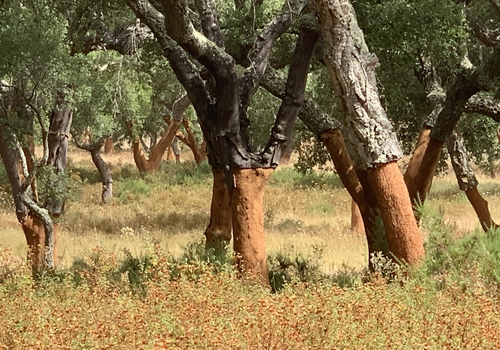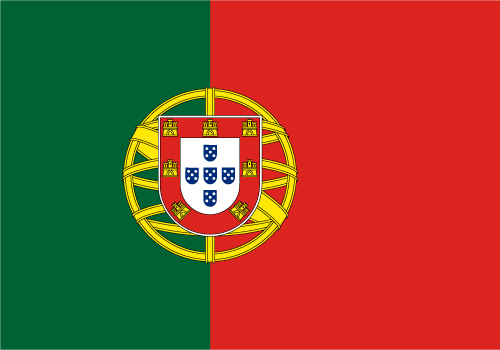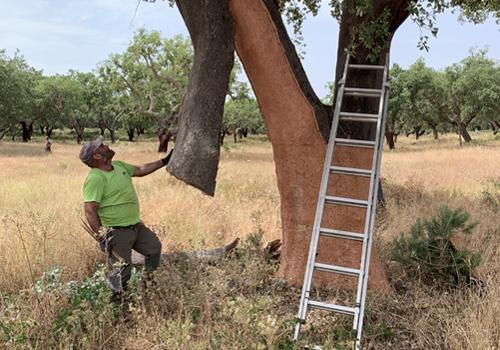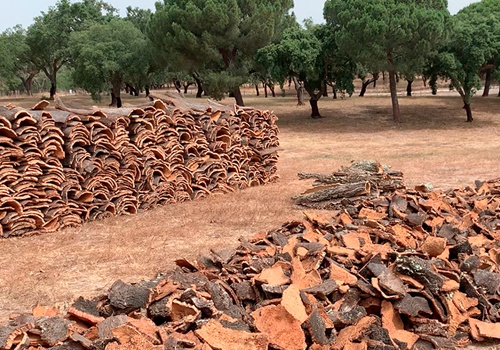Cork is the bark of an oak tree known botanically as QUERCUS SUBER
Cork is an evergreen which flourishes in regions bordering the Mediterranean Sea. The top cork producing country is Portugal, which supplies approximately 50%. Spain is second, producing roughly 25%. The remainder grows in a variety of coastal Mediterranean countries including Algeria, France, Morocco, Italy and Tunisia.


Cork’s Use Has Paralleled Civilization’s Progress
As early as 2,500 BC cork was being used for fishing floats in ancient Egypt. Later, in 400 BC, it was commonly used as stoppers for containers, and for the soles of shoes. One famous user, as history reports, was Alexander the Great. Reportedly, a piece of cork once saved him from drowning when crossing a turbulent river! From wine stoppers in ancient Rome to the modern day use in the Library of Congress and the NASA space program, cork’s distinctive attributes have added to the quality of our lives.


Cork is Sustainable & Rapidly-Renewable
In these times of increased concern for the environment, cork remains the only tree that can regenerate itself after each harvest.
A 100% renewable resource, cork is the only tree whose bark can regenerate itself after harvest, leaving the tree unharmed. The initial harvest occurs when the tree reaches maturity at around 25 years. Workers carefully strip the bark off 2/3 of the tree, but a thin layer of protective inner bark gives the tree its unique ability to survive and regenerate itself after the debarking process. Bark regenerates for a new harvest every 9 years, making it rapidly renewable. Cork trees can live over 250 years!
What is the Harvesting Process?
Stripping the bark requires great skill, to prevent damage to the inner bark. A specially designed hatchet makes this process possible. The first harvest, or “virgin” bark, has a very irregular exterior surface and is grayish in color. This bark is suitable for grinding into various minute sizes ideal for insulation and composition cork. Interestingly, it has also become a very popular material for the manufacturing of decorative items.
The subsequent strippings of the tree will take place every nine years until it is approximately 150 years old. A much younger then tree then replaces the older one. The bark that grows out after the “virgin” bark is “refugo” bark. It looks entirely different as it has a much smoother surface which is brown in color. Most of the the first “refugo” harvest is for grinding purposes. The subsequent strippings yield better quality cork composed of fewer and more closed pores (grains). The majority of these harvests are for the production of cork stoppers or other items requiring a finer looking appearance.


How Does Bark Come to Market?
After the stripping process, the bark remains in the forest for some days to dry and for potential buyers to inspected it. Purchasing bark is not an easy task, as the quality not only varies from forest to forest but from tree to tree as well. The same tree may even produce varying degrees of quality cork, depending on its exposure to sunlight.
Boiling the “refugo” at the factory makes removing the woody outer layer easier, and the bark becomes more elastic and easier to flatten, for later sale. Sorting bark into various thicknesses and qualities then determines its sale price and manufacturing use.






